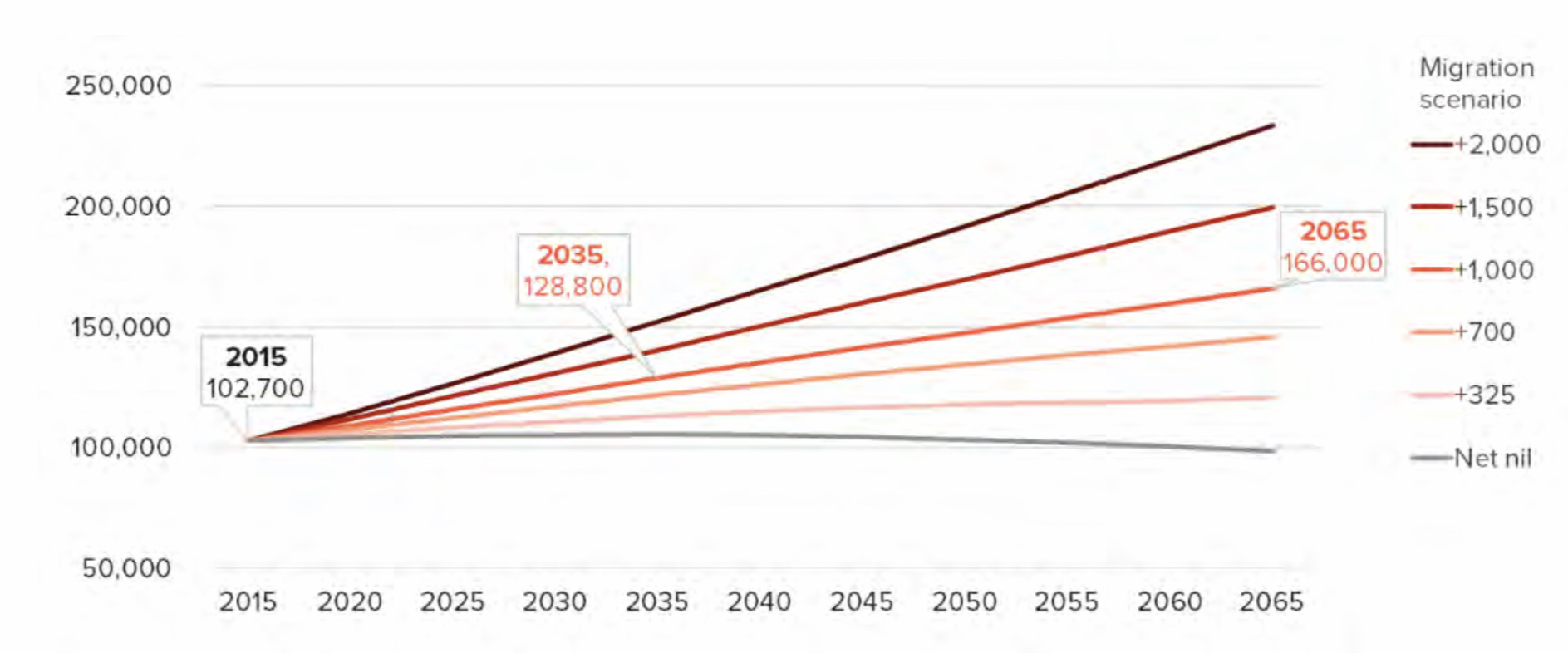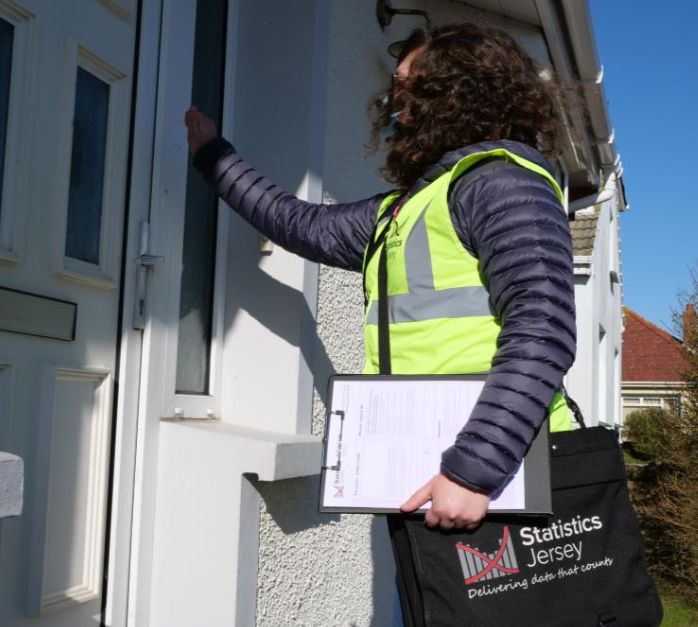


If you're one of the 75% of islanders who think the Government should set a figure on how many people should live in Jersey, the new ‘Common Population Policy’ may come as a disappointment.
You will probably seek comfort that its overarching aim is to “progressively reduce Jersey’s reliance on net inward migration” but a subsequent search in the policy for "how will that be done?" will largely be a fruitless one.
Anyone wanting firm statements such as "the population should not increase any more" or even, "we need X more migrants a year to pay for our ageing population" will struggle to find them.
Because, in short, the Common Population Policy says that now is not the time for such definitive decisions.
But if a policy doesn’t have firm policy statements, then what does it have?
In summary, it sets the scene: an island with an aging population which is increasingly dependent on a proportionally smaller working population; a shortage of affordable homes; natural spaces increasingly under threat from development; a workforce which is less productive than it used to be; and a future which will involve more automation and require specific employment skills.

Pictured: The policy says that policies will need to be developed to encourage more older people to work. However, it says no-one who has already retired will be forced back into the workplace.
But it terms of meeting these challenges, the policy puts its hands up, citing a lack of reliable data on which to make informed decisions.
If States Members back this policy, they will initially be supporting an yet unspecified investment in new IT systems.
Some existing projects – such as the £63m ‘Integrated Technology Solution’, which will bring the Government’s finance, payroll and asset-management systems together, and the tax office’s ‘Combined Employer Return’ upgrade – are already in train but more is needed, the policy says.
Ministers will also have a clearer idea when the 2021 Census results are published in March.
“This will give a very detailed picture of the population as at March 2021 and will provide valuable analysis to support further policy development,” the Common Population Policy says.
But it adds: “However, the Census is a ‘snapshot’ in time and cannot be used to help monitor the success of population-related policies from year to year.
“Other data sources must be developed to provide this ongoing reporting, possibly including an electronic census.

Pictured: How the population will grow under different migration scenarios.
“The work currently underway to implement improved migration controls will also start to yield much better data from 2022 onwards. A new IT system is under development and once operational, will allow for detailed analysis of migrant workers and the businesses and sectors in which they are employed.
“This will include detailed monthly reports on current activity as well as the ability to provide longitudinal analysis, tracking individual workers and businesses over time.
“This IT system will have links to the new Revenue Jersey Combined Employer Return, which will be launched at the beginning of 2022. This will provide monthly updates of manpower data for the first time.
Remember to hand your tax effective rate notice to your employer as soon as possible. They need it to submit your tax and contributions to Revenue Jersey. The notice contains your Tax Identification Number - find out more at https://t.co/0IClrlgecV pic.twitter.com/z9Me3J9NRL
— Government of Jersey (@GovJersey) December 8, 2021
Pictured: Revenue Jersey is pulling together various data systems in the New Year.
“At the same time, plans are being developed to create a data linkage infrastructure between administrative data sets held by departments.
“This will provide a base to provide annual estimates of the population, track the journeys of migrants through the Control of Housing and Work Law system and produce income distribution statistics based on tax and benefits data.”
The policy adds that a ‘rolling e-census’ – as Guernsey has - would significantly improve the available evidence on which to base future decisions, conceding “in the absence of these new data sources, it is inevitable that this first policy report is limited in scope."
So, what does the policy say on a commonly held view, particularly among older islanders, that the population is too high and a net-zero immigration target should be adopted?

Pictured: The policy suggests that a rolling-e-census runs alongside the once-every-decade snapshot of population.
The policy says: “Ministers have given thorough consideration to the impact of a net-zero inward migration policy.
“With the underlying aim of the Common Population Policy to progressively reduce Jersey’s reliance on net inward migration within the currently agreed common strategic policy, it is very clear that the intention of Ministers is to reduce inward migration.
“However, as set out in the report, in the absence of up-to-date and detailed data on migration issues and evidence of the relative efficacy of different actions to be taken to reduce net inward migration, it is not realistic to set a timetable for the speed of reduction in migration levels, nor to predict any underlying ongoing requirement for net migration at this time.
“However, assuming successful adoption of planned IT systems and subsequent collection and analysis of data, the government should be in a position to forecast the date on which the Island will be able to reach a stable population position, towards the end of the next electoral cycle.
“Progress towards achieving this target date, will be reviewed by each subsequent Council of Ministers.
“For the same reason that this first policy does not include any numeric targets or overall population levels, it is also premature to comment on the implications of a net zero policy.”
The policy does, however, set out a net-zero scenario: if the number of people arriving matched those leaving, overall population would decline slowly.
However, the proportion of those of working age, relative to those who are either still in education or no longer working, is forecast to decline to a greater degree, creating a higher dependency ratio, or a greater proportion of non-working people being supported by those who are working.
Between 2025 and 2065, the number of people aged 65 and above is forecast to increase by more than one-third, while the number of working age people reduces by 18%.
The policy says that without major changes to the economy or reductions in government benefits and services, this would require significant higher tax and/or social security contributions for workers and businesses.
If the Government allowed migration to increase by 700, as the Fiscal Policy Panel predicts, the number of people in each age group is forecast to increase.
While the number of working age adults increases in this scenario, the percentage increase in those aged 65 and above is much higher and the dependency ratio is still forecast to increase.
The number of people aged 65 and above is forecast to increase by 65%, while the number of working age people increases by 20%. This increase in dependency ratio also puts pressure on the funding of public services, the policy states, although to a lesser extent than the net nil scenario.
Although the policy fails to propose a migration target, it can justify its decision by drawing on failed attempts in the past to limit the population, most recently in 2014, when an interim policy set a net migration target of +325 people a year.
For a multitude of reasons, this policy failed abysmally and just the following year, the net inward migration rate was 1,500 people – more than four-and-a-half times over the target.
Including births over deaths, the population increased by 1,700 that year.
Between 2001 and 2019, the island’s population has increased by more than 20,000 people to around 108,000.
However, more recently the rate of net immigration has declined and it is still not know the full impact of Brexit and the pandemic on the island’s population, beyond anecdotal evidence that some European nationals have left.
The policy says the failure to control immigration was due to a lack of statistics; the need to rely upon growing the working age population to increase business activity and maintain and grow government revenues; and the lack of effective controls to limit the number of migrants who have the right to settle permanently in the island.
Ministers say the last problem has been remedied by new migration controls and proposed changes to the Control of Housing and Work Law.
The policy also highlights a disparate approach to Government planning: the Bridging Island Plan assumes a net increase of 800 people a year, the Our Hospital project assumes 1,000, the Fiscal Policy Panel opts for +700, which is the same as Social Security.
Unsurprisingly, the Common Population Policy stresses that a unified approach is needed.
Although referencing previous reports that identifies a housing shortage, and the fact that older people are more likely to under-occupy their homes, the policy says that better data is needed.
The policy feedbacks on the various groups and surveys the team behind it has engaged with. From a public survey filled in by 1,728 people, just over 75% of respondents thought that the Government should set a target figure for the population.
When asked to consider the impacts of a changing population over 79% thought that there was too much traffic on the roads and 88% thought that it was currently too hard for local families to find a home to purchase
28% of respondents thought they would leave Jersey in the next five years – the high cost of housing was cited as the main reason for leaving by nearly half of that group (43%)
Two thirds of people agreed that Jersey had welcomed migrants for hundreds of years and they were part of local culture
Less than 30% of respondents thought that Jersey’s population was ‘about right’ or ‘too low’ with 61% believing the current level was too high.
A significant majority of those aged over 55 and born in Jersey considered the population as too high (81%) while at the opposite end of the spectrum, only 28% of non-Jersey born under-35s considered the population to be too high.
The policy charges future governments to produce an annual population policy, once the data is available from 2025. It wants these governments to produce an annual ‘population policy report’ and proposes what sort of information should be in it.
It also sets out what data collection is needed, and which minister is responsible for gathering it, and it calls on each Council of Ministers to set a population target every four years.

Pictured: The policy recommends that future governments look at bringing in an islandwide digital ID to access services.
Further, the policy suggests that future councils establish a full rolling e-census programme, they introduce a “robust and secure” digital ID system for use across government, they consider increasing the pension age, and they develop new education and skills policies to encourage more islanders into work, including retirees, and retrain those whose job is being replaced by automation, such as process-driven admin roles.
The Government says it cannot introduce a meaningful population policy until it has the information on which to base effective decisions.
Critics, however, will no doubt argue that this is an example of another Government kicking this most-tricky-to-tackle 'can' down the road yet again.
Comments
Comments on this story express the views of the commentator only, not Bailiwick Publishing. We are unable to guarantee the accuracy of any of those comments.